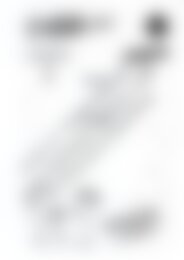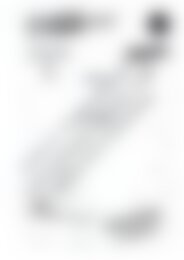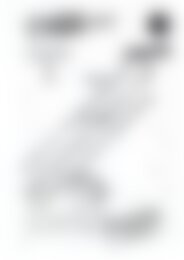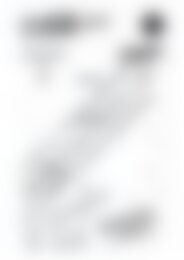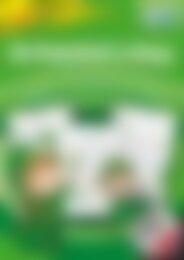PR-0552UK Primary Science - Book 2
You also want an ePaper? Increase the reach of your titles
YUMPU automatically turns print PDFs into web optimized ePapers that Google loves.
Mixing<br />
Objective<br />
• begin to investigate how<br />
materials may be changed<br />
by mixing<br />
Working scientifically<br />
• Questioning<br />
• Observing<br />
• Predicting<br />
• Investigating and<br />
experimenting<br />
• Recording and<br />
communicating<br />
Designing and making<br />
• Exploring<br />
• Making<br />
Background information<br />
Mixing is the combination of two<br />
substances.<br />
Red, yellow and blue are called<br />
primary colours and form the<br />
basis of all other colours. Every<br />
other colour can be produced by<br />
mixing different combinations of<br />
these colours. For example; red<br />
+ yellow = orange; red + blue =<br />
purple; yellow + blue = green.<br />
Dissolving occurs when two<br />
substances, like salt and water,<br />
combine completely. Substances<br />
generally dissolve faster and<br />
more effectively in hot water<br />
compared to cooler water.<br />
Before the lesson<br />
Materials needed<br />
• White cartridge paper, primary colour tempera paints, palettes for mixing colours,<br />
paintbrushes, water (in containers), paint shirts for pupils.<br />
• Salt, coffee, flour, custard powder, glass jars, cold water, hot water, kettle for<br />
heating water, spoons, teaspoons, oven mitts.<br />
Preparation<br />
• Set up suitable areas and stations for pupils to work in small groups to experiment<br />
with paints.<br />
• Set up the mixing of substances with hot and cold water as a demonstration at the<br />
front of the class.<br />
Note: This lesson on mixing can be conducted over two lessons.<br />
The lesson<br />
Stimulus<br />
• Allow the pupils to observe the colour of objects inside and outside the classroom.<br />
List the objects and colours on the whiteboard. Discuss.<br />
What to do<br />
• Give pupils a sheet of cartridge paper with their name on the back. Fold it in half.<br />
Place small ‘blobs’ of red, blue and yellow paint along the centre fold (not too far<br />
apart). Have pupils gently rub the sides of their hands from the fold outwards<br />
to the paper edges. This should move the paint into patterns. (Be careful not to<br />
let it ooze out the edges.) When finished, carefully open the paper to reveal a<br />
symmetrical pattern. What colours can they see? How are they different from the<br />
three primary colours they started with? How do they think the new colours were<br />
made? Put patterns aside to dry.<br />
• Using another sheet of paper, allow pupils to experiment using blue, yellow and<br />
red paints to make new colours. Mix blue and yellow, blue and red and yellow and<br />
red. Discuss results.<br />
• To observe safety precautions, organise the Question 2 experiment so it is a<br />
demonstration at the front of the classroom.<br />
• Pupils can help spooning the four different substances into two jars each.<br />
• Pupils can come to the front of the class to help pour the cold water into the first<br />
set of jars. Pupils can help to stir. Pupils decide if the substance mixes easily or not<br />
easily.<br />
• The teacher pours hot water into the jars. Ask pupils to come and help mix, while<br />
the teacher is still holding the jar with an oven mitt. Decide once again if the<br />
substances mix easily or not.<br />
• Pupils complete the table and decided if substances mix more easily (dissolve) when<br />
mixed with hot water than with cold.<br />
Viewing Sample<br />
Materials and change ~ Activity 3<br />
After the lesson<br />
Answers<br />
1. (a) Teacher check<br />
(b) blue + yellow = green<br />
blue + red = purple<br />
red + yellow = orange<br />
2. Answers will vary<br />
3. Hot water<br />
Additional activities<br />
• Try mixing other substances in hot and cold water. The pupils predict what will<br />
happen for each and test their ideas.<br />
94 <strong>PR</strong>IMARY SCIENCE ~ Prim-Ed Publishing ~ www.prim-ed.com










